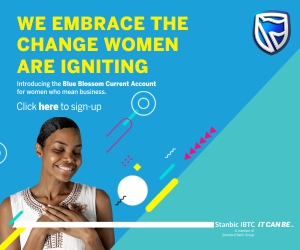GROpinion
South Africans are killing Nigerians, Buhari is laughing with their President


By ‘Fisayo Soyombo
On Tuesday, the United States announced a hike in the cost of visa application for Nigerians. The US Consulate in Nigeria didn’t mince words in explaining the move: The total cost for a US citizen to obtain a visa to Nigeria was higher than the total cost for a Nigerian to obtain a comparable visa to the United States. The imbalance had to be corrected.
It’s a policy that can be rationalised. If a country’s citizens are not inferior to another’s, their visa application to that country should not be costlier than the other way. It is the least a country could do for its citizens. In this specific case, the US had apprised Nigerian authorities of the disparity in visa fees.
Well, the Interior Ministry set up a committee and, as with many things Nigerian, that was the end of the matter. That’s such a shame. What was more mortifying was the ministry’s lowering of the Nigerian visa application fee for US citizens within 24 hours of the US Consulate’s protests — a move US authorities were clearly unimpressed with. Gaping hole exposed: Nigeria’s diplomatic relations are far more woeful than we’ve been imagining.
No need to cast a cross-continental gaze at the US. Over ‘here’, in South Africa, Nigerians are being slaughtered like rams almost every week, and it is the brazenness that astounds the most. Last week, there was a headline, ‘Another Nigerian killed in South Africa’. If you read the papers three of four weeks before, you would have seen the same headline, ‘Another Nigerian Killed in South Africa’. In the previous week, you would also have spotted ‘Another Nigerian killed in South Africa’.
Dig deeper to the preceding two weeks and you would have found that same headline, ‘Another Nigerian killed in South Africa’. Every now and then, there’s always a Nigerian, and another one, to be murdered by South Africans. A lot can be said of the insouciance of the South African government, but beyond the usual tokenistic state utterances, the Nigerian government has never truly been riled up by the relentless killing of its citizens in almost all corners of South Africa.
In the last three years, and up until July 2019, some 127 Nigerians had been killed in South Africa, 13 of them masterminded by the Police. Between January and June 2019 alone, 10 Nigerians were killed in that country. In the latest installation of the killings a few days ago, Pius Abiaziem, a native of Imo State, was having breakfast in the Eastern Cape Province of South Africa when he was picked up among many by eight policemen, some of them masked, and taken to his home, where he was extra-judicially murdered. Unknown to them, his sister-in-law was taping proceedings with her phone. Now, their crime can no longer be hidden.
Since the audio became public, Godwin Adama, Nigeria’s Consul-General to South Africa, has been talking about sending a note verbale to Pretoria. Ideally the gruesomeness of the murder and track record of South African killers should have forced President Muhammadu Buhari to step in. A meeting with Cyril Ramaphosa is scheduled for Pretoria in October, but Buhari had a premature opportunity in Japan, where he, Ramaphosa and numerous African leaders attended last week’s Tokyo International Conference on African Development (TICAD). Guess what our President was doing?
Smiling away with Ramaphosa! At least that is what the cameras of his own photographers and the social media handles of his image makers told us. If the two presidents were any serious about resolving the persistent killings, that meeting ought to have been frank and sombre, fully empathetic towards the feelings of dozens of mourning Nigerian families. Importantly, Buhari didn’t demand for the coming October meeting; Ramaphosa invited him!
Hike in US visa fee and killing of Nigerians in South Africa, what is the correlation? Responsible governments don’t joke with the welfare of their citizens. That is what the US Consulate in Nigeria proved to us; that is what the US government would have done if its citizens were being wasted in South Africa or any other country.
And beyond lowering the corresponding visa fee of Americans, Nigeria can learn to for once send a strong enough-is-enough message to South Africa. Instead of a smiley Buhari and Ramaphosa, what the media should have been reporting by now is a diplomatic row between Abuja and Pretoria. Earlier this year, Canada rowed with China over the type of citizen a Nigerian would describe as a ‘common criminal’.
Robert Lloyd Schellenberg, the Canadian, had been originally sentenced to 15 years in prison in China for drug smuggling. He appealed this judgement, only to see the Dalian Intermediate People’s Court in China’s Liaoning province upgrade it to a death sentence. The suspicion was that the shocking judgement was politically motivated, owing to the December 2018 arrest of Meng Wanzhou, Chief Financial Officer of Chinese telecommunications giant Huawei Technologies, in Vancouver on a US extradition warrant — an action China responded to by detaining Michael Kovrig, a Canadian diplomat, and Michael Spavor, a Canadian consultant, in Beinjing on allegation of endangering state security.
The execution order on Schellenberg prompted strong reprimand from Canadian Prime Minister, Justin Trudeau, while the Canadian Foreign Ministry updated its travel advisory for China, warning citizens about “the risk of arbitrary enforcement of local laws”.
But here in Nigeria, our President is forbidden from speaking on such matters. Buhari hasn’t personally spoken; Foreign Ministry doesn’t even know the significance of a travel alert much less consider issuing one.
If anyone makes too much noise over it, the President’s noisemakers would scream ‘Buhari can’t speak every time; that’s why he has aides.’ But it’s life we’re discussing here; and to almost totally leave the crusade to Abike Dabiri-Erewa, Chairman of Nigerians in Diaspora Commission (whose commitment to the course, by the way, is indubitable), is to thoroughly undermine the sanctity of human life. If Trudeau could go that mile for a Canadian drug convict, why can’t Buhari do more than laugh with Ramaphosa, for Nigerians who have committed no crime? Maybe we are too harsh on Buhari; a President who can’t even secure the lives of his people at home, how does one begin to ask him to secure the lives of those abroad?
Soyombo, former Editor of the TheCable, the International Centre for Investigative Reporting (ICIR) and SaharaReporters, tweets @fisayosoyombo
-



 GRPolitics4 days ago
GRPolitics4 days agoPeaceful Voting Underway in Central African Republic as 2025 General Elections Commence
-



 Politics3 days ago
Politics3 days agoEnugu Group Lauds Mbah’s Superlative Performance, Pledges 2027 Support
-



 Culture4 days ago
Culture4 days agoAwka Community Elects Fredrick Chinwuba New President General of Awka Development Union of Nigeria (ADUN)
-



 News3 days ago
News3 days agoGOCOP Condoles With Freedom Online Publisher on Son’s Death








